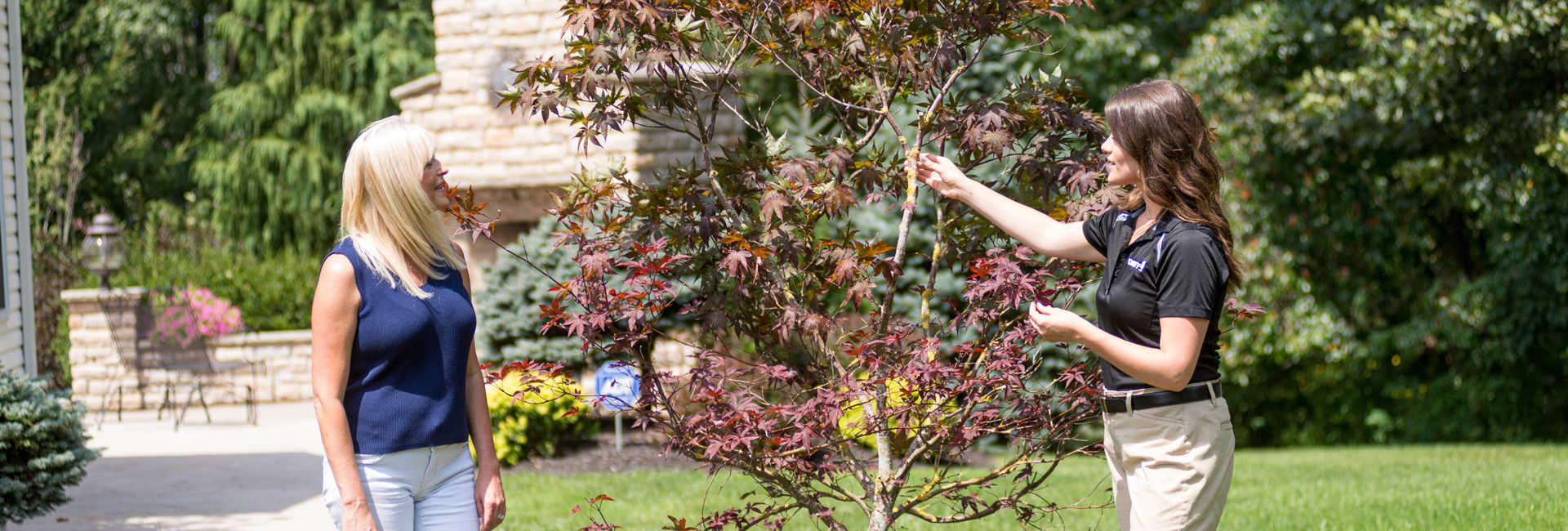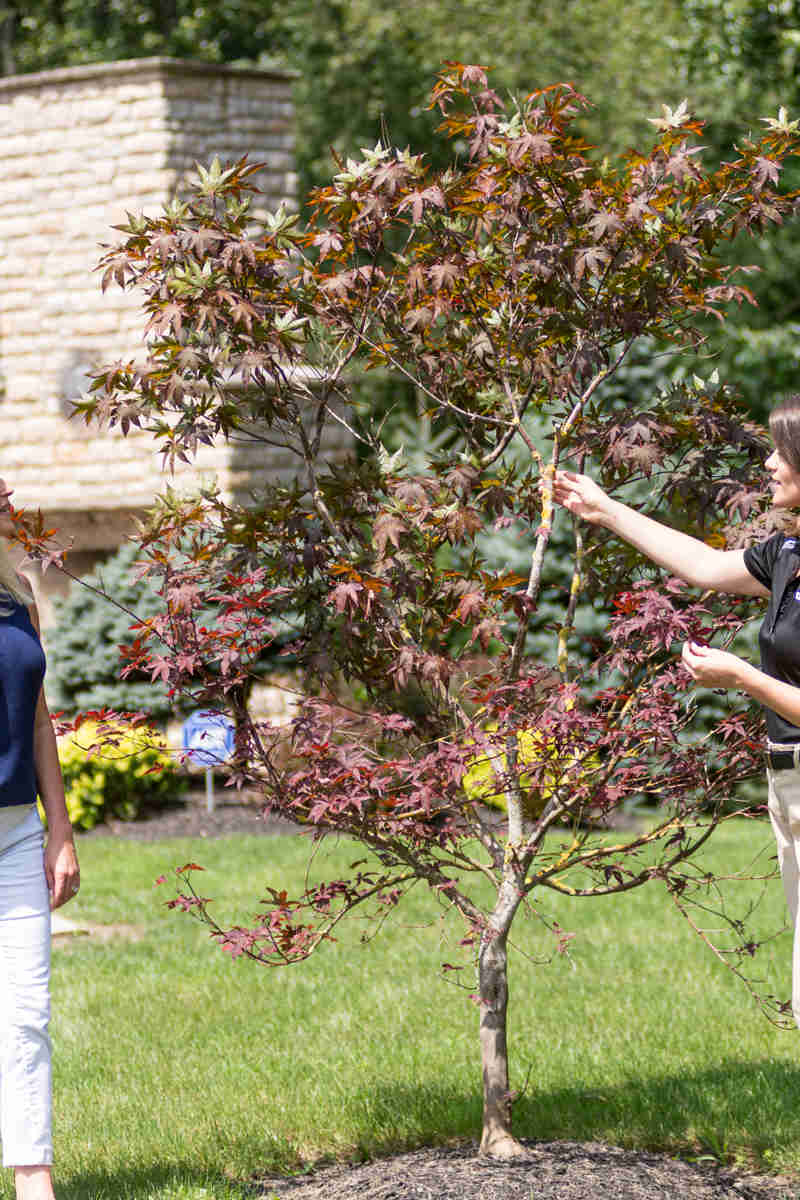Whitefly Description:
Although they look like miniature white moths, whiteflies are neither moths nor flies. Instead, they are insects of varying species in the order of Homoptera, which also includes aphids, scales and mealybugs. Whiteflies seemingly “show up out of nowhere,” often when greenhouse plants and nursery stock are planted. Whiteflies have yellow or orange bodies with a waxy coating that makes them appear white.
Hosts:
Whiteflies attack a variety of plants including these preferred species: Azalea, Citrus, Fuschia, Gardenia, Hibiscus, Honeylocust, Redbud, Rose and Viburnum.
Biology & Symptoms:
After mating, females lay 50-150 cigar-shaped eggs, which are attached to the underside of the leaf with a peg-like structure. When hatched, they become crawlers, dispersing over the lower leaf surface and inserting their needle-like mouth into plant leaves to uptake the nutrients. After first molt, whiteflies lose their legs and antennae to become scale-like nymphs. After molting two more times, the nymphs reach pseudopupal stage, finally emerging as an adult. The lifecycle of whiteflies from egg-to-adult is 4-6 weeks with many overlapping generations, especially in warmer climates.
Infestation symptoms include: mottling on lower leaves, yellow spots on upper leaves, curling or malformation on new leaves, premature defoliation and withering twigs. When heavily infested, shaken branches usually result in a cloud of adult whiteflies that looks somewhat like snow escaping from a snow globe. As they feed, whiteflies produce a sticky residue called honeydew, which can lead to the growth of a black fungus called sooty mold.
Management:
To monitor infestations, use yellow sticky traps. Most whiteflies are kept in check, thanks to natural enemies like parasitic wasps, predatory insects and insect-pathogenic fungi. While horticultural oils do nothing to control adult whiteflies, they can help minimize eggs and immature populations. To control established adult populations, use residual and/or systemic controls.





